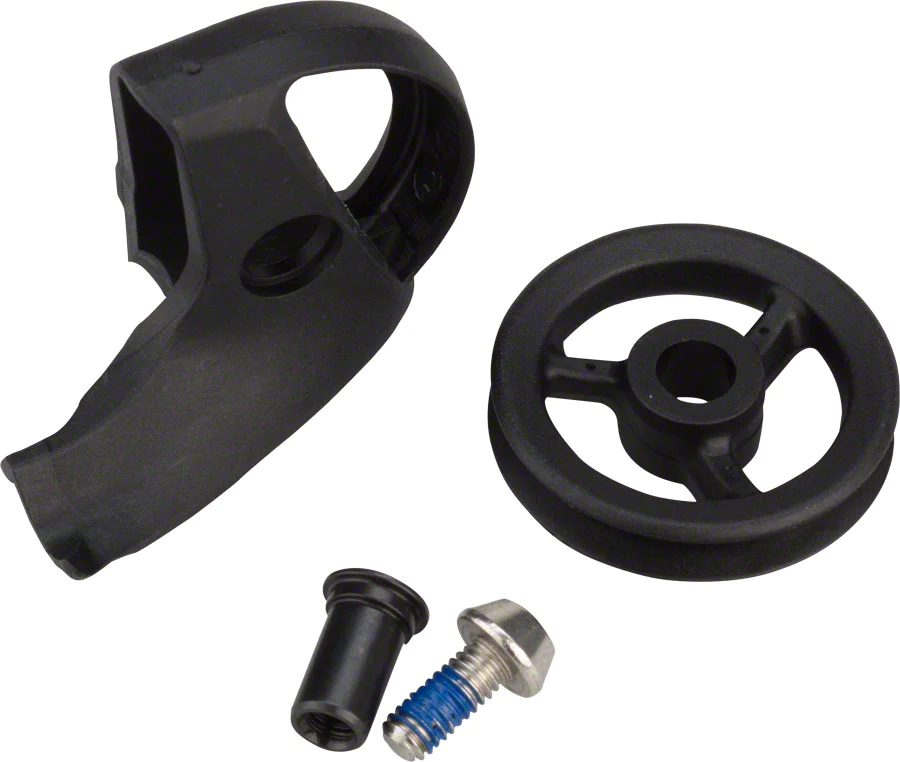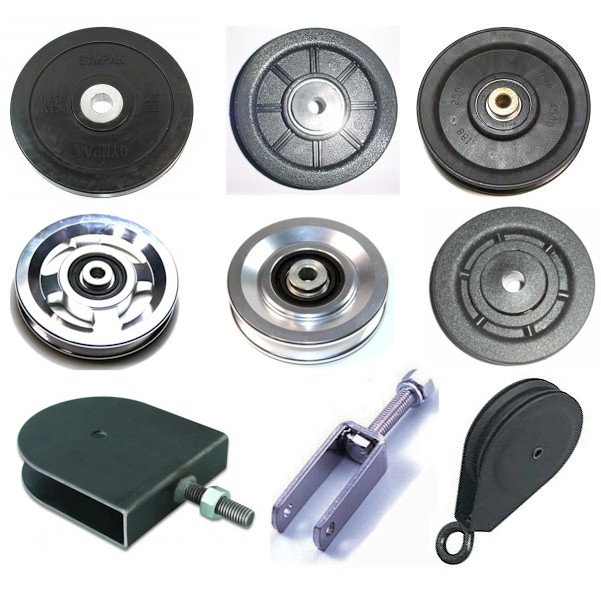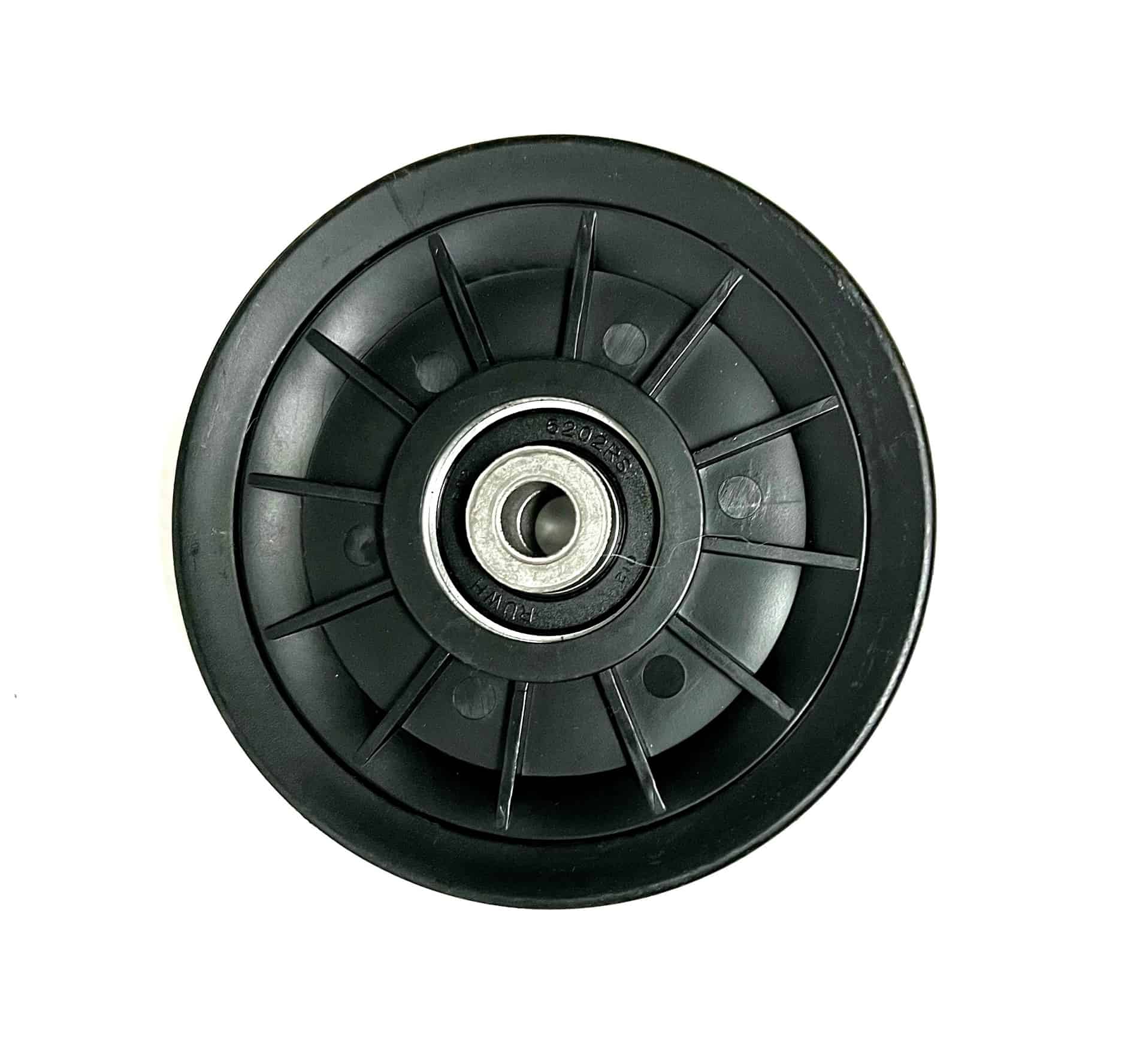Product Description
Standardized Steel Cable Cast Iron Ring Forging Crane Electro-Hydraulic Idler Pulley
Product Description
Container crane pulley block,
With high bearing capacity, high wear resistance and long service life
Sheave features:
1) Material: Q235B, Q345B, 35#, 45#, 60#, SSW-QR1, S45C
2) Groove surface quench: HRC45-55
3) Groove surface quench depth: 2mm-2.5mm
4) groove MT after heat treatment and welding line UT and MT
5) Max processing diameter: 2, 000mm
6) Short production cycle
It is used for crane equipment, port equipment, oil drilling rig and so on.
Detailed Photos
Our Advantages
Application
| Other Products |
Company Profile
Factory introduction
HangZhou CHINAMFG Metallurgy Equipment Manufacturing Co., Ltd. is a high-tech enterprise registered in HangZhou City of ZheJiang Province, which is mainly engaged in the design and manufacture of spare parts for metallurgy equipment, hoisting machinery, oil drilling rigs, and heavy decelerator boxes.
Our company boasts a professional team who is full of vitality, with high efficiency, and industry minded. Our R&D technicians are highly skilled with rich experience, and possess strong design and development capabilities. There are 2 experts in our company who enjoy the state special allowance. We have carried out broad cooperation with renowned factories and design institutes both at home and abroad.
With advanced design, outstanding manufacturing crafts and vigorous management, the whole manufacturing process of our company is conducted by strictly implementing strict quality management system. Our products are widely used by a great number of steel plants in China and exported overseas, where they have received high praise from our customers.
By following the enterprise philosophy of innovation, quality and creating value for the clients, our company is constantly bringing in advanced technologies from home and abroad. We are committed to taking the enhancement of product quality, safety and reliability as our responsibility and striving for providing high quality products and perfect services to the clients.
HangZhou CHINAMFG Metallurgy Equipment Manufacturing Co., Ltd. Warmly welcomes you to be our distinguished clients and friends.
Customer communication
Certifications
| Packaging & Shipping |
FAQ
Q: What information should I provide if I want to order the products?
1) Product information: Quantity, specification
2) Delivery time required.
3) Shipping information: Company name, address, phone number, destination seaport/air port.
4) Forwarder's contact details if there is any in China.
Q: How about your payment terms?
A: 30% -50%deposit, with the balance before delivery, we accept T/T and L/C at sight.
Q: Can I use our own logo?
A: Yes, we can produce by using your own logo if you need.
Q: How about sample & MOQ policy?
A: Welcome sample order. MOQ can be 1 set.
Q: What is your lead time for your goods?
A: Normally 30 days after confirmed order,
/* January 22, 2571 19:08:37 */!function(){function s(e,r){var a,o={};try{e&&e.split(",").forEach(function(e,t){e&&(a=e.match(/(.*?):(.*)$/))&&1
| Type: | Lifting |
|---|---|
| Material: | Steel |
| Lifting Capacity: | <1T |
| Fixed Form: | Welding Type |
| Shape: | Round |
| Certification: | ISO 9001 |
| Customization: |
Available
| Customized Request |
|---|

How are cable pulleys adapted for specific applications in construction and engineering?
In construction and engineering, cable pulleys are adapted and customized to meet the specific requirements of different applications. These adaptations ensure that the pulleys can effectively handle the unique challenges and demands of various construction and engineering tasks. Here is a detailed explanation of how cable pulleys are adapted for specific applications in construction and engineering:
- Material Selection: Cable pulleys used in construction and engineering are often made from materials that offer high strength, durability, and resistance to harsh environmental conditions. Common materials include steel, stainless steel, aluminum, and composite materials. The choice of material depends on factors such as the load capacity, operating environment, and specific application requirements. For example, pulleys used in heavy-duty lifting operations may be made from robust steel alloys to withstand heavy loads and repeated use.
- Load Capacity: Cable pulleys are designed and adapted to handle specific load capacities based on the intended application. Pulleys used in construction and engineering applications may have significantly higher load ratings compared to those used in other industries. The size, diameter, and construction of the pulleys are carefully selected to ensure they can safely support and distribute the anticipated loads. Factors such as the type of cable used, the weight of the load, and the required safety factors are considered when determining the appropriate load capacity of the pulleys.
- Specialized Configurations: Depending on the application, cable pulleys may have specialized configurations to meet specific needs. Examples include multiple sheave pulleys, adjustable pulleys, and swivel pulleys. Multiple sheave pulleys, also known as block and tackle systems, consist of multiple pulleys arranged in tandem to increase mechanical advantage and lifting capacity. Adjustable pulleys allow for changes in cable tension or length, providing flexibility in various situations. Swivel pulleys have built-in swivel mechanisms that enable the pulleys to rotate freely, accommodating changes in cable direction and reducing friction.
- Environmental Considerations: Cable pulleys used in construction and engineering applications must often withstand challenging environmental conditions. They may be exposed to extreme temperatures, moisture, chemicals, or abrasive substances. To adapt to these conditions, pulleys can be coated with protective finishes or made from corrosion-resistant materials. Sealed bearings or bushings may be used to prevent the ingress of contaminants. These adaptations enhance the longevity and performance of the pulleys in demanding construction and engineering environments.
- Integration with Systems: Cable pulleys are integrated into larger construction and engineering systems, such as cranes, hoists, elevators, or conveyor systems. Adaptations are made to ensure compatibility and seamless integration with these systems. This includes considerations for mounting options, connection methods, and alignment with other components. The design and dimensions of the pulleys are often tailored to fit within the specific system architecture, enabling smooth operation and efficient energy transfer.
- Regulatory Compliance: Construction and engineering industries are subject to various regulations and standards. Cable pulleys used in these applications may need to comply with specific industry standards, safety codes, or certifications. Manufacturers adapt their pulley designs and manufacturing processes to meet these requirements, ensuring that the pulleys conform to the necessary safety and quality standards.
In summary, cable pulleys in construction and engineering applications are adapted to suit the unique demands of these industries. They are customized in terms of material selection, load capacity, specialized configurations, environmental considerations, integration with systems, and regulatory compliance. These adaptations enable cable pulleys to effectively and safely support the lifting, pulling, and positioning requirements of construction and engineering tasks.

How are cable pulleys utilized in material handling and conveyor systems?
Cable pulleys play a crucial role in material handling and conveyor systems, facilitating the movement, transport, and efficient handling of goods and materials in various industries. They offer several advantages that contribute to the smooth operation and increased productivity of material handling processes. Here is a detailed explanation of how cable pulleys are utilized in material handling and conveyor systems:
- Tensioning and Tracking: Cable pulleys are utilized in material handling and conveyor systems to maintain proper tension and tracking of conveyor belts. They are often positioned at strategic locations along the conveyor line to redirect the belt and ensure it remains aligned and centered. Tensioning pulleys help in maintaining the correct tension in the conveyor belt, preventing slippage, and ensuring smooth and efficient movement of materials.
- Load Support and Weight Distribution: Cable pulleys assist in load support and weight distribution on conveyor systems. They are designed to withstand heavy loads and provide support for the conveyor belt as it carries materials. By distributing the weight evenly, cable pulleys help prevent sagging or excessive strain on the belt, ensuring optimal performance and extending the lifespan of the conveyor system.
- Directional Changes: Cable pulleys are employed in material handling and conveyor systems to facilitate directional changes of the conveyor belt. They are utilized at points where the conveyor line needs to change its path, such as at curves, corners, or diverting stations. By redirecting the belt and guiding it along the desired path, cable pulleys enable the efficient flow of materials and smooth operation of the conveyor system.
- Speed Control: Cable pulleys are used for speed control in conveyor systems. By adjusting the size of the pulleys or changing the pulley arrangement, the rotational speed of the pulley and the conveyor belt can be modified. This allows operators to control the speed at which materials are transported, ensuring optimal throughput, and accommodating different processing requirements or material handling conditions.
- Power Transmission: Cable pulleys play a role in power transmission within conveyor systems. They can be connected to drive motors or other power sources to transmit rotational force to the conveyor belt. This power transmission mechanism enables the movement of the belt and the materials being conveyed, ensuring a continuous flow of goods without manual intervention.
- Conveyor Belt Tension Adjustment: Cable pulleys are utilized for adjusting the tension of the conveyor belt. By incorporating tensioning pulleys in the system, operators can apply the necessary tension to ensure the conveyor belt remains properly tensioned throughout its operation. Proper tensioning is essential for optimal performance, preventing belt slippage, and maintaining consistent material flow.
- Material Sorting and Diverting: Cable pulleys are employed in conveyor systems for material sorting and diverting purposes. They can be integrated into diverters, sorters, or conveyor junctions to redirect materials to different conveyor lines or processing stations based on their specific destination or sorting criteria. Cable pulleys enable efficient material sorting, distribution, and routing within the material handling system.
- Overhead Conveyor Systems: Cable pulleys are commonly used in overhead conveyor systems, where the conveyor belt is suspended from overhead tracks or cables. The pulleys in these systems help support the weight of the belt and the materials being conveyed while allowing smooth movement along the designated path. Overhead conveyor systems are often utilized in industries such as automotive manufacturing, warehousing, and distribution centers.
Overall, cable pulleys are essential components in material handling and conveyor systems. Their utilization in tensioning, tracking, load support, directional changes, speed control, power transmission, tension adjustment, and material sorting contributes to the efficient and seamless movement of goods and materials, enhancing productivity and streamlining material flow in various industrial applications.

What is a cable pulley, and how is it used in various applications?
A cable pulley, also known as a pulley wheel or sheave, is a grooved wheel that is typically used in conjunction with a cable or rope to change the direction of force and transmit motion. The cable is threaded through the groove of the pulley, allowing it to move along the circumference of the wheel. Cable pulleys are widely used in various applications where force needs to be redirected or mechanical advantage needs to be gained. Let's explore how cable pulleys are used in different industries and applications:
- Fitness and Exercise Equipment: Cable pulleys are commonly found in fitness and exercise equipment, such as weightlifting machines, cable crossover machines, and pulley systems for resistance training. They are used to guide and redirect cables, allowing users to perform exercises that target specific muscle groups. Cable pulleys provide smooth and controlled movement, enabling users to adjust resistance levels and achieve a wide range of exercises for strength training and rehabilitation.
- Mechanical and Industrial Applications: Cable pulleys play a vital role in mechanical and industrial applications where force or motion needs to be transferred, redirected, or lifted. They are used in cranes, hoists, and lifting equipment to change the direction of cables and ropes, allowing for the lifting and movement of heavy loads. Cable pulleys are also employed in conveyor systems to guide and support the movement of materials or products along production lines.
- Material Handling and Rigging: Cable pulleys are extensively used in material handling and rigging applications. They are utilized in construction sites, warehouses, and shipping yards to facilitate the movement of materials, equipment, and cargo. Cable pulleys are often incorporated into rigging systems to create mechanical advantage and enable the lifting or pulling of heavy objects with reduced effort.
- Automotive Industry: Cable pulleys are found in various automotive systems and components. They are utilized in engines for timing belt arrangements, where they help synchronize the rotation of the crankshaft and camshaft. Cable pulleys are also used in vehicle steering systems, enabling the transmission of force from the steering wheel to the steering mechanism, allowing for precise control of the vehicle's direction.
- Window and Door Systems: Cable pulleys are employed in window and door systems to enable smooth and controlled opening and closing. They are used in sliding windows and doors, allowing the cables or ropes to move along the pulley's groove, guiding the movement and ensuring proper operation of the opening mechanisms.
- Entertainment Industry: Cable pulleys are utilized in the entertainment industry for various applications. They are used in stage rigging systems to lift and move scenery, lighting fixtures, and other equipment during performances. Cable pulleys are also employed in aerial acrobatics and flying systems for performers, providing controlled movement and safety during aerial stunts.
Cable pulleys are versatile components that find application in a wide range of industries and scenarios. Whether it's fitness equipment, industrial machinery, material handling, automotive systems, window and door mechanisms, or entertainment rigging, cable pulleys play a crucial role in redirecting force, transmitting motion, and enabling smooth and controlled movement in numerous applications.


editor by CX
2024-04-09